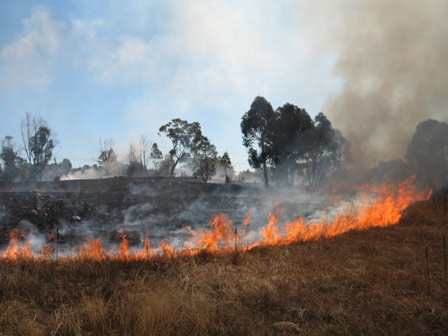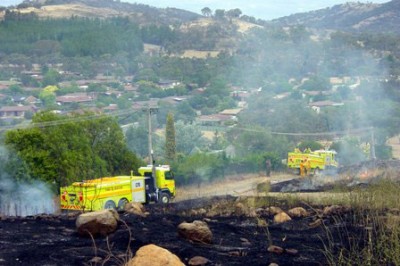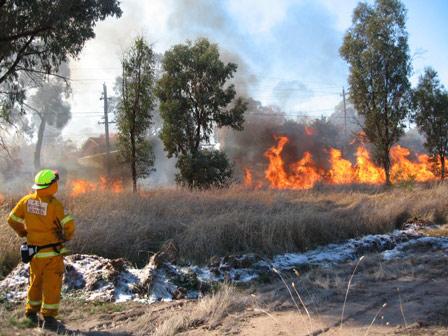
They can generate enormous amounts of heat. The taller and drier the grass, the more intensely it burns. An average flame height from a grassfire would be between 2 to 5 metres. Living in a grassland area with dried-out, brown or goldcoloured grass over 10cm high can be a bushfire risk. Short grass under 10cm is a much lower risk. The shorter the grass the lower the flame height and the easier the fire is to control.
Grassland includes pasture, crops, open native grassy woodland as well as those areas of open space in and around the suburbs. Grassfires can start accidentally when using machinery such as chainsaws, lawnmowers, tractors, grinders and welders. The hot exhaust of a vehicle parked on a road verge or driving through long, dry grass can start a grassfire.
Do you, or any of your family and friends:
- enjoy a picnic in the bush?
- go for a Sunday drive in the country?
- horse ride around Canberra?
- go bushwalking or bird watching?
- enjoy the thrill of mountain biking?
- love to camp or 4WD in summer?
- live close to paddocks or open space?
If you can tick any of the above then grassfire can affect you!
Get informed and find out what you should be doing to keep your family and friends safe from bushfire.

The speed at which a grassfire can start and spread can catch people off guard.
The radiant heat from a grassfire can kill anyone caught out in the open.
The safest place to be during a grassfire is well away from the threat.
If you are threatened by a grassfire, always protect yourself by covering up all exposed
skin with protective clothing such as:
- Long-sleeved shirt and pants made from a natural fibre such as cotton or wool;
- Sturdy boots and woollen socks;
- Tough leather gloves;
- A wide-brimmed hat;
- A face mask or towel to cover your mouth and nose; and
- Eye protection such as goggles.
You need to shield yourself from radiant heat behind a solid structure such as a building or large rock outcrop if in the bush etc.
Reduce the height and proximity of grass to these buildings and assets by using one or a combination of the following:
- Slashing;
- Mowing;
- Grazing;
- Spraying and poisoning vegetation; or
- Creating fuel breaks by removing all fuel (vegetation) down to the soil.
Narrow fuel breaks will not stop a fire. Fire breaks should be at least 20 m wide, this could be 10m each side of a fence line.

It is important that you create and maintain a clear space around all the assets you want to protect so you can defend them as safely as possible. By carefully reducing and managing the grass and other vegetation in this space you are also limiting the ability of a moving grassfire to ignite a building through direct contact with flame or radiant heat.




